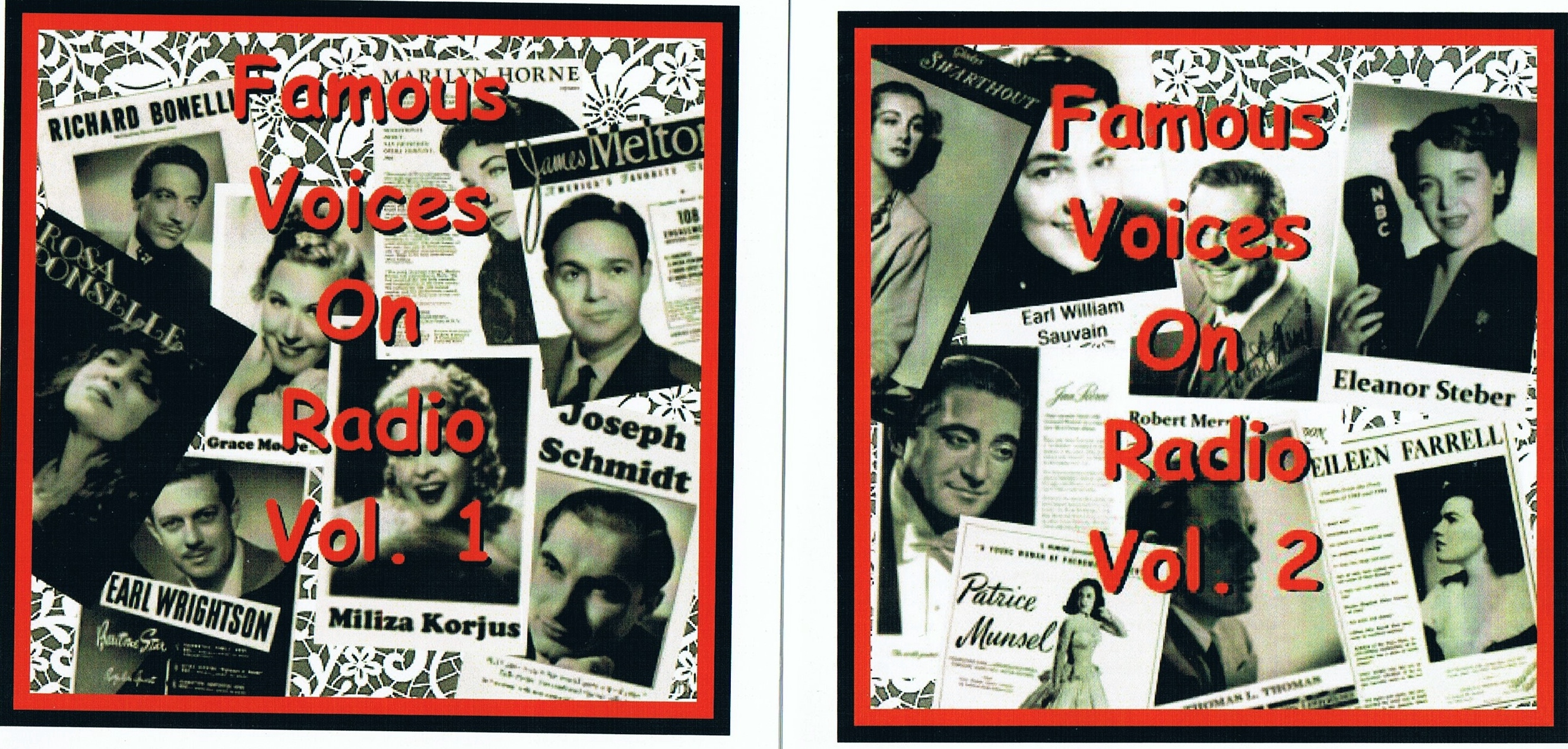
FAMOUS VOICES ON RADIO VOL. 1 & 2

Click here to order the CDs : www.musicfromthepast.com
Every self-respecting record collector still treasures the LP issues (Sandy Hook etc.) of the great operatic stars of the past in rare radio b’casts.
I’m happy to say these two very welcome CD releases don’t duplicate any track whatsoever on the vinyls and thus offer recordings for the first time ever available in most cases and this on the compact disc medium. A legion of legendary singers perform a vast repertoire of popular song.
These two volumes were conceived and compiled by mutual friends Andy Pope and Bill Park, using material from their joint collections. Andy Pope was responsible for the fine restorations and Jim Drake a third musketeer in this endeavor wrote the informative booklet notes with biographies and photos (courtesy Ray Kolle) of the artists involved.
It’s hard to choose favorites from these 49 generous selections which are all fine to literally outstanding.
Let’s have a look at some of the featured baritones . Richard Bonelli opens volume one with Stothart’s “Cuban love song” (1935) ; a song created by Lawrence Tibbett in 1931. Bonelli displays a sense of rhythm and a well-produced baritone of warm quality and fine enunciation.
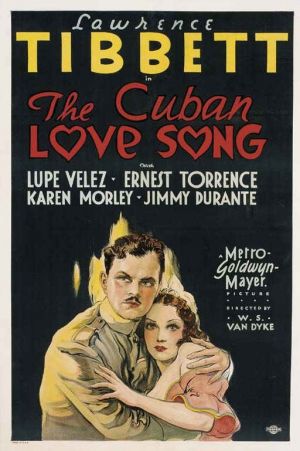
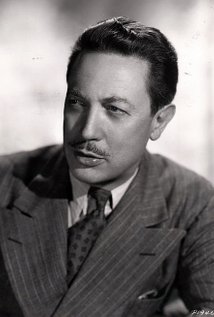 (Bonelli)
(Bonelli)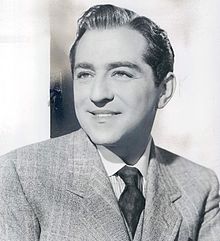 (Merrill)
(Merrill)
Bonelli was Robert Merrill’s hero (“he altered my life forever”) who sings Giebel’s “Kentucky Babe” (1944) with his unique resonant vocal cords, ringing top notes and astounding technical control . If only Robert Merrill would have displayed the same sensitivity and interpretative skills in his operatic repertoire as he does here : simply the greatest baritone voice featured in these two compilations in spite of the strong competition.
One of those competitors and obviously THE baritone star with the general public at that time was –judging at least from the public’s reaction to his singing- without doubt John Charles Thomas. His sonorous expansive voice can be heard in a very vivid “Sally, won’t you come back” (1937) in which he even inserts an Al Jolson like parlando interacting with a very responsive public.
The movies made Nelson Eddy not only a star in the US but also in Europe. It’s strange to hear a pure baritone voice tackle Boris’s monologue and in English on top of that (1939) but he does remarkably well singing with ease, excellent enunciation and with a most intelligent approach to the role.
Another baritone who impresses the listener is the Columbian radio star Carlos Ramirez. He sings a most stirring Granada (1946)- a song which he also recorded commercially but not as exciting as on this broadcast - and a sensual “Caribbean prayer” (1945).
Besides a beautiful baritone voice Robert Weede displays smooth and polished legato in Kern’s “And love was born” (1945) and in Herbert’s “Gypsy love song” (1946).
Igor Gorin –in his early years cantor at the Vienna Leopoldstrasse synagogue -demonstrates an almost tenor-like flair in Herbert’s “Neath a southern Moon” from Naughty Marietta. The baritone also sings the introvert “Sylvia” (1956).
Sadly enough in 1940 Lawrence Tibbett’s vocal decline is already present in Youman’s “Through the years” . On Broadway Earl Wrightson succeeded Tibbett in New Moon here the polished and elegant baritone sings “Welcome Home” from Fanny (1955) and the “Song of the Vagabonds (1947)

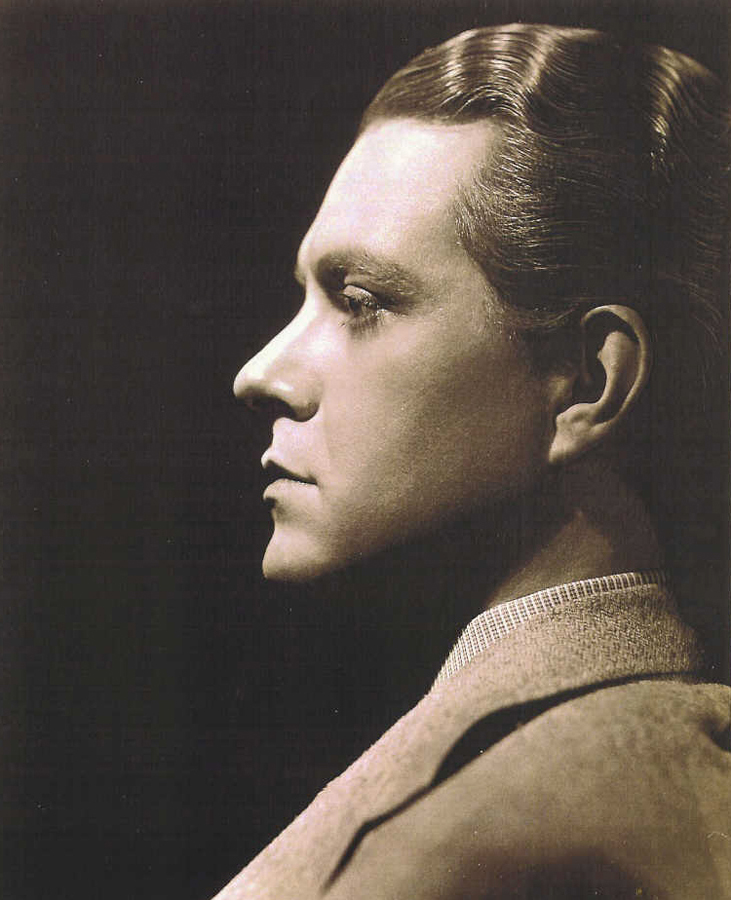 (Eddy)
(Eddy)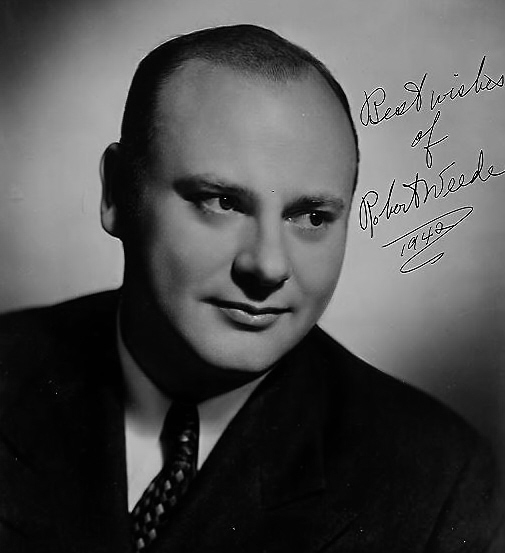 (Weede)
(Weede) 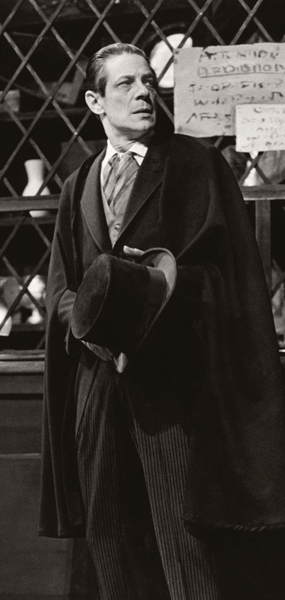 (Treigle)
(Treigle)
The Welsh baritone Thomas L. Thomas who moved to the US at age 12 was a baritone mainly known for his work on radio and television. While he did appear in opera on a few occasions for some reason or another he opted for a concert career. This 1941 broadcast of Leoncavallo’s “Mattinata” has him sing in Italian instead of the usual English or Welsh. The song was the first song ever written for the Gramophone company (1904) and ever since, the piece has become a concert favorite. Thomas tackles the song with panache and technical ease.
New York born composer Charles Griffes –a Humperdinck pupil – died at the early age of 35 during the worldwide influenza pandemic in 1920. Ezio Pinza, the first basso in the compilation sings his ‘Lament of Ian the Proud’ in heavily accented English in a 1944 broadcast which is afaik the earliest recording of the piece. Much later the lament was also recorded by Samuel Ramey, Barbara Bonney and Sherrill Milnes.
The second bass included is the New Orleans born and NY City opera stalwart Norman Treigle who sings Rodgers’s “No other love” (1955) displaying a legato and a smoothness in vocal delivery often absent in his operatic interpretations. A superb rendition.
The two cd’s cover no less than 13 sopranos. The longest track on volume one belongs to Jeanette McDonald in a fine 1945 version of Romberg’s “It doesn’t cost you anything to dream” recorded a year after she had started studies with Lotte Lehmann which probably gave her slender lyric soprano more body. The Grace Moore hit “One night of love” is very ably and freshly sung by Licia Albanese (1951) and in better English than expected but the best version of the film song is for this listener still the one by the voluptuous Anna Moffo.
Grace Moore is also featured in two selections : she’s downright magnificent in Berlin’s “Remember” (1942) . In another broadcast six years earlier she performed “Jurame” ; the top hit by former Debussy student Maria Grever and made famous by José Mojica in the thirties.
Kern’s “Can’t help singing” based on the film of same name was also the title of Eileen Farrell’s biography. She sings it here in a 1944 version. Still full-blooded vocalism and not the crooning of her later in life jazzlike albums.
 (McDonald)
(McDonald)  (Moore)
(Moore)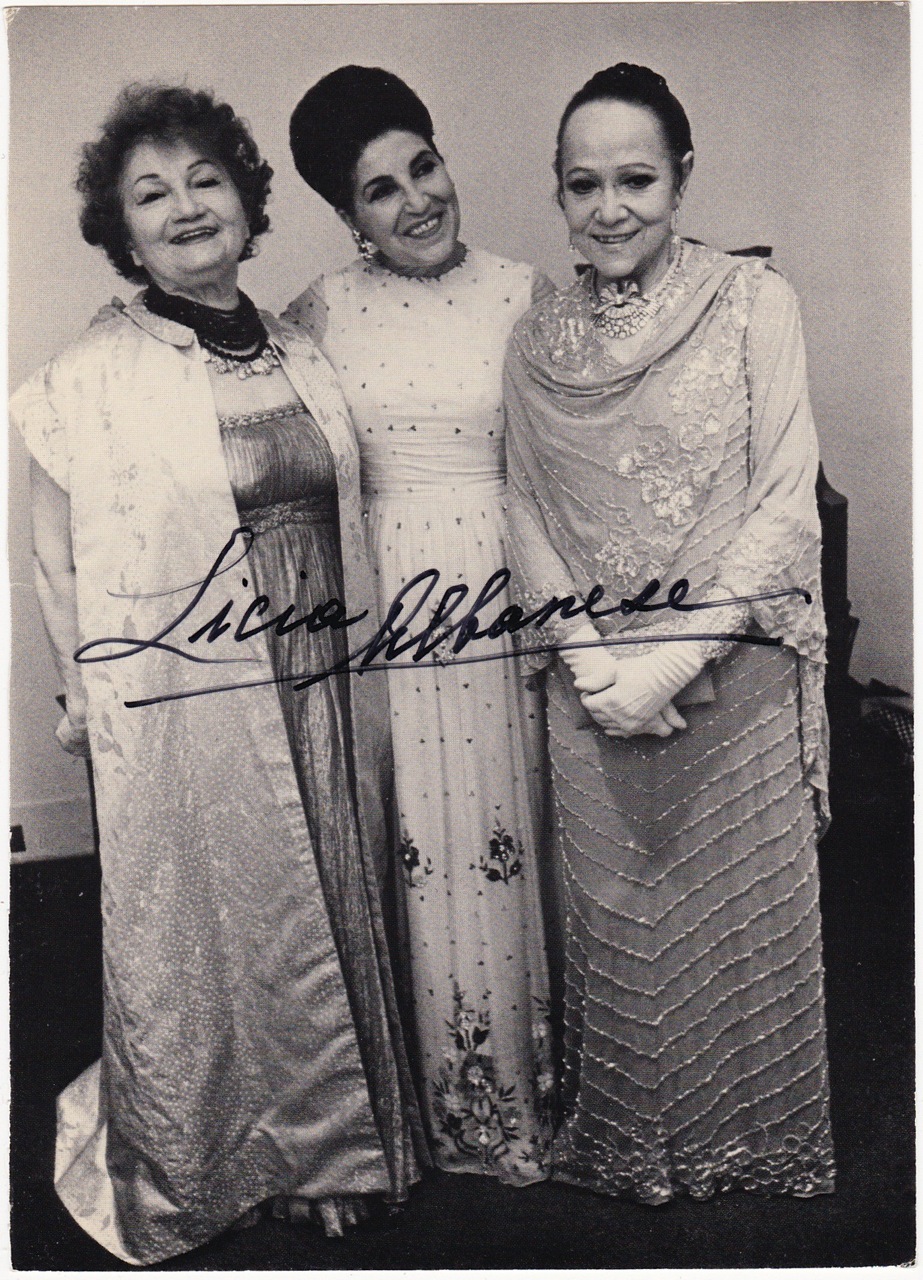 (Albanese + Sayao on the right)
(Albanese + Sayao on the right) 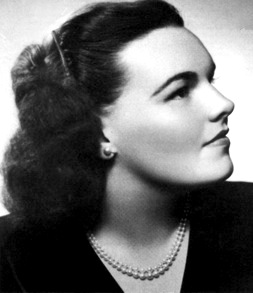 (Farrell)
(Farrell)
I’ve seldom heard Bidu Sayao better and more involved than in her 1954 version of “Long, long ago” which in the bizarre arrangement by the Guatemala born composer and accompanist Miguel Sandoval sounds like a waltz against time.
Another arrangement against time is Wagnerian Marjorie Lawrence’s fast rendition of “Waltzing Mathilde” (1946) turning it into a kind of foxtrot version.
Joan Sutherland once said that as a teenager she was much influenced by seeing Miliza Korjus in the MGM movie The Great Waltz. Both artists actually met much later when Sutherland was on tour in the US. Korjus never really hit me as did the technically more endowed Erna Sack or the more sensual Gitta Alpar though “canary fanciers” will get a thrill out of her 1939 sung version of “The Gypsy and the Bird”. A song we all first came to know through the 78 rpm recording by Galli-Curci and later also recorded by Robin, Gruberova and….Sutherland.
There is more to Florence Quartararo than her celebrated legendary recording of Handel’s Care Selve which launched her back in the limelight when re-issued on the Record of Singing CD set. Quartararo, in fact a Bing Crosby discovery, can be heard in a 1946 broadcast of Rodgers “My romance” which was also released on CD IPCD 1030.
We can quickly skip the ‘older’ Rosa Ponselle who sings a decent but heavy handed unmemorable “Ave Maria” (1953)
The first time I ever heard Cadman’s “From the land of the blue water” was –weird as it may be- by…Harpo Marx of all people in the 1940 film “Go West”. Later of a course I got the 1911 recorded version by Alma Glueck. It is here sung by Eleanor Steber (1945) who also applies her warm, beautifully trained voice to “Beyond the blue horizon” a Jeanette Mc Donald tune from Monte Carlo a 1930 Ernst Lubitsch movie.
Rose Bampton – Toscanini’s Beethoven Leonore on record - was often criticized by British reviewers. I never understood why. She renders the ‘Romance’ (1943) from Romberg’s The Desert Song with taste and considerable vocal ability.
Patrice Munsel thinks she’s Carmen when singing Bizet’s “Ouvre ton Coeur” with orchestra (!) but delivers a sensual “Siboney” (1944) with an interpolated high C
Gladys Swarthout singing “Where is my love ?” gives proof of why she was so popular at the time though the tune isn’t really ear candy.
And now to our tenors. The earliest recording goes back to 1937 with Joseph Schmidt singing Mattinata in a broadcast from his 1937 Carnegie Hall concert. It is one of the few tracks already available (CD Koch) so is his magnificent rendition of the Postillon aria (CD The Record Collector) taken from an actual radio performance in 1932. This is the bravour aria which Schmidt also recorded commercially in Vienna in 1936. Spoiler alert : in the third verse where the tenor sings a top ‘D’ (taken piano!!) the recordings breaks off since the playing time of the record had reached its limit.
The brothers-in-law Jan Peerce and Richard Tucker provide wonderful, fresh tenor singing. Jan Peerce is good in Arlen’s “Over the rainbow” (1946) but he’s even better in “That night was made for love” (1944). In 1945 the year of his Metropolitan opera debut Richard Tucker sang “You are love” from Kern’s Showboat. No signs of the mannerisms here which occasionally marred his operatic endeavours but the singing has warmth and at the same time brilliance and strength.
Christopher Lynch a name unknown to this Fleming apparently was a protégé of his countryman John Mc Cormack. Lynch exhibits some fine head voice in “When Irish are Smiling” from a 1947 broadcast a year after he moved to the US to replace Richard Crooks on “The voice of Firestone”.
Another name hitherto unknown to me is the Cleveland born Broadway tenor Earl William Sauvain who is fine in “My sonata” and in “Younger than springtime” (1951) but a Mario Lanza he ain’t.
 (Lynch)
(Lynch) 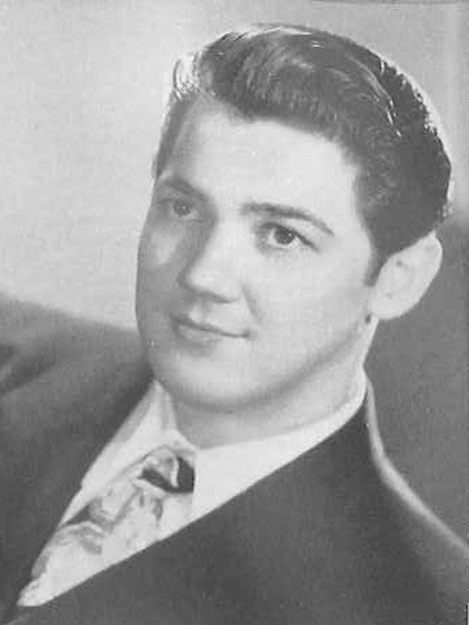 (Earl William)
(Earl William) 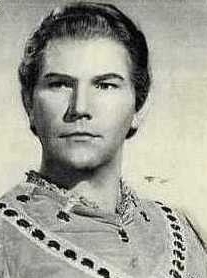 (Sullivan)
(Sullivan) 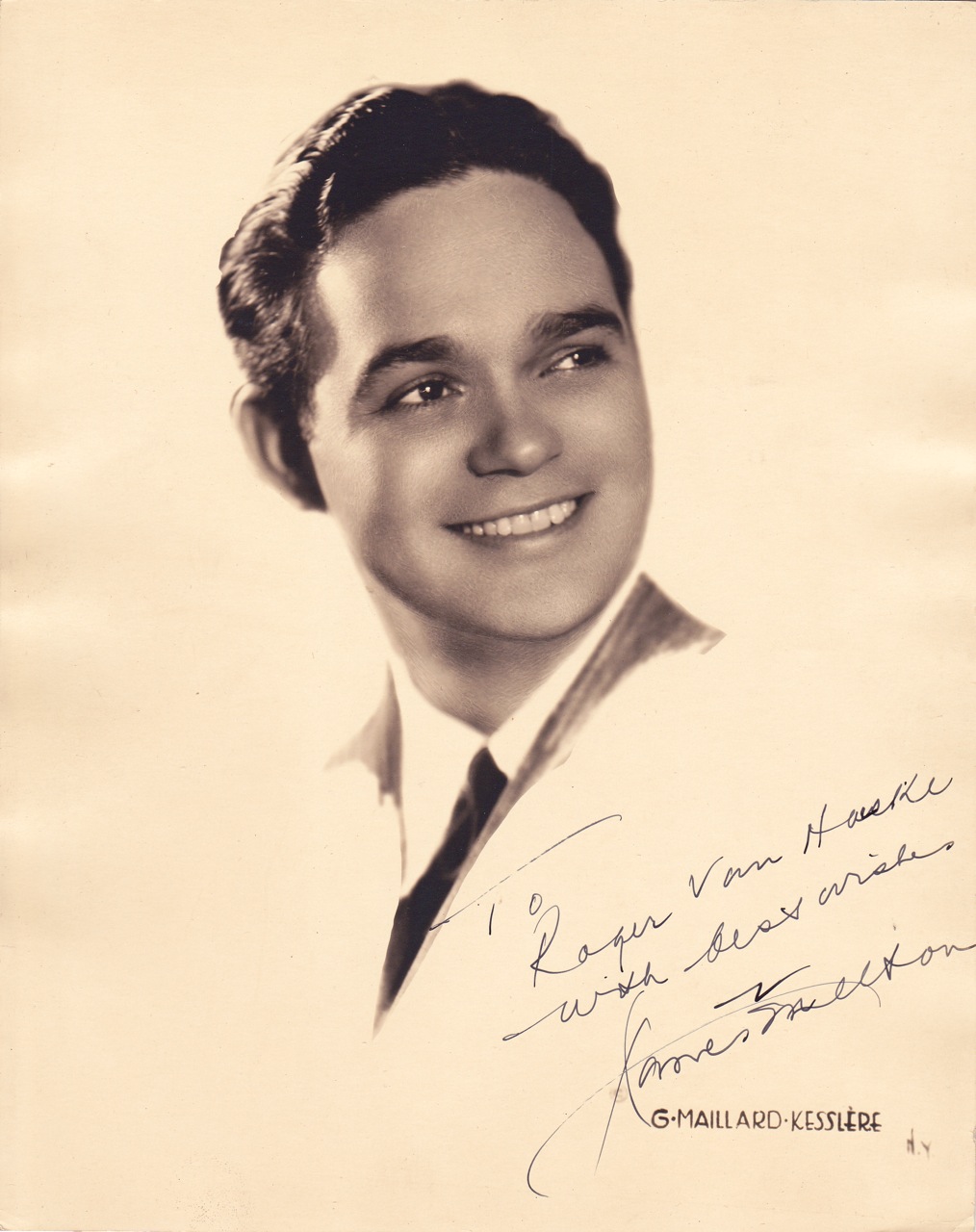 (Melton, Mintzer coll.)
(Melton, Mintzer coll.)
Jussi Bjoerling needs no recommendation. His unique silvery tenor is rather wasted on Orlando Morgan’s bland “Clorinda” (1948), a recording also available on CD WHRA-6063.
The much talented but unfortunate Brian Sullivan (suicide in Lake Geneva) sings the traditional “The garden where the praties grow” once made popular by Mc Cormack and Peter Dawson. In a 1956 broadcast he also sings Miguel Sandoval’s bolero “Eres tu” written for, created and also recorded by Beniamino Gigli.
The producers are obviously big fans of tenor James Melton who is acclaimed in the booklet “as the possessor of one of the most recognizable lyric-tenor voices on radio and recordings”. I wouldn’t go that far but he was nevertheless a talent to reckon with. You can listen to him in Gershwin’s “When love walked in” a 1944 broadcast and two years after his Metropolitan opera debut as Tamino. He’s also featured with Carl Sigman’s “ Ballerina” in a 1947 broadcast. The song was later also recorded by the likes of Bing Crosby and Nat King Cole.
The two rarest (and strangest) tracks belong to Mario Del Monaco and Marilyn Horne. The great dramatic tenor can be heard in an Italian version of “Ghost Riders in the Sky”. The booklet wrongly states the recording goes back to 1953, his absolute prime. In fact this is late (and not too good) Del Monaco and the recording is not a radio broadcast. The song was featured in a RAI TV show ‘Una voce in vacanza” made in 1967. In the notes one can also read Del Monaco sang Saint-Saens’s Samson at the Verona arena which he never did. The only arena in which he sang the biblical hero was the Fourvière arena in Lyon.
 (Cowboy Mario)
(Cowboy Mario) 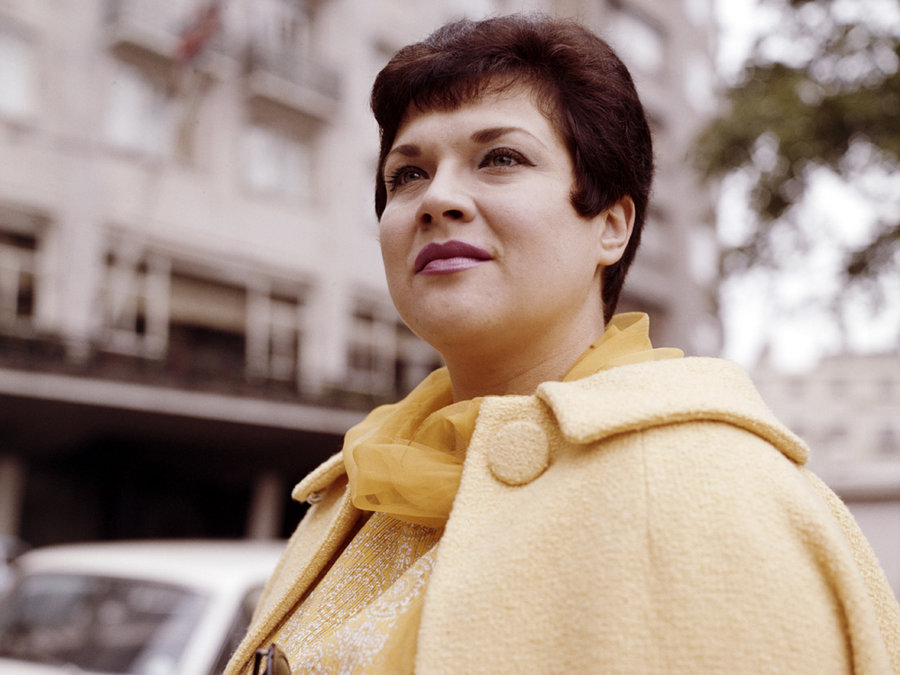 (Horne)
(Horne)
Top class is Marilyn Horne’s interpretation of the Roy Orbinson hit ‘Only the lonely’ (1990) her deep impressive mezzo obviously fits Orbison’s vocal writing like a glove. Strange that the author of the booklet hears her partly sing in Spanish while it is perfect Italian.
This track alone is already worth the purchase of the CD and let’s face it, how often can one listen to the same operatic hackneyed repertoire by the same beloved singers over and over again? For that reason alone a most welcome release which will give the purchaser many aural delights.
Rudi van den Bulck, April 2017